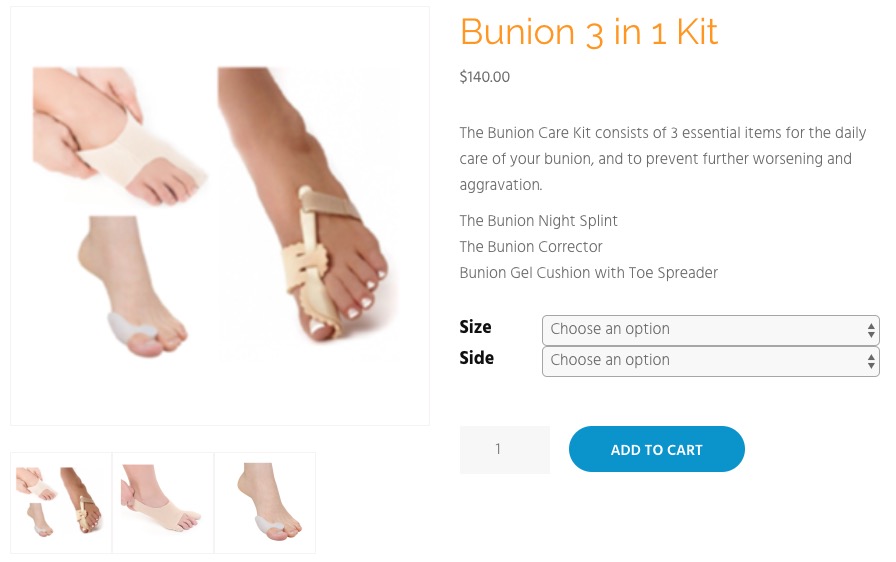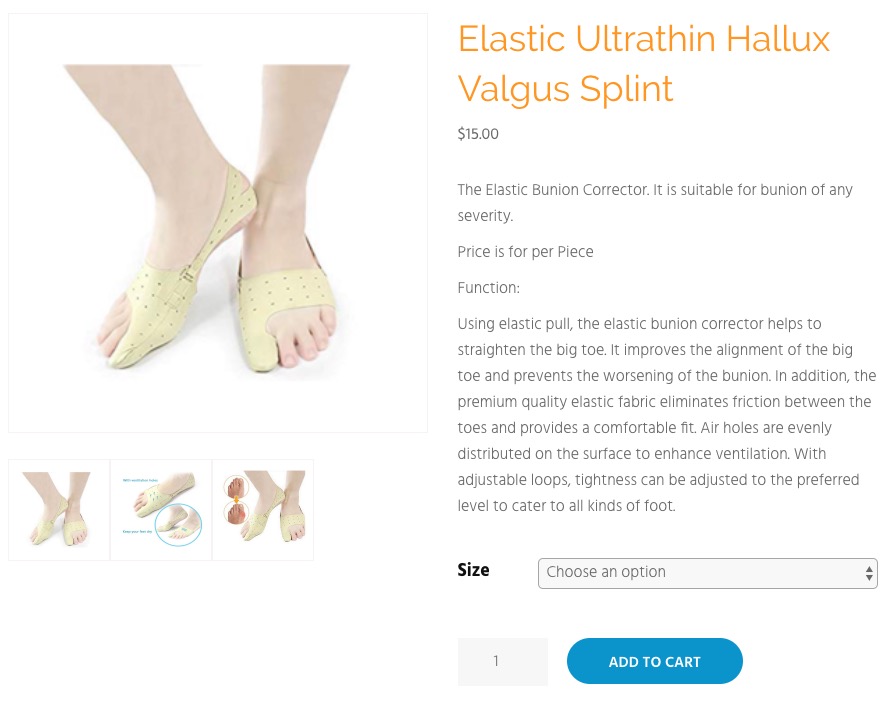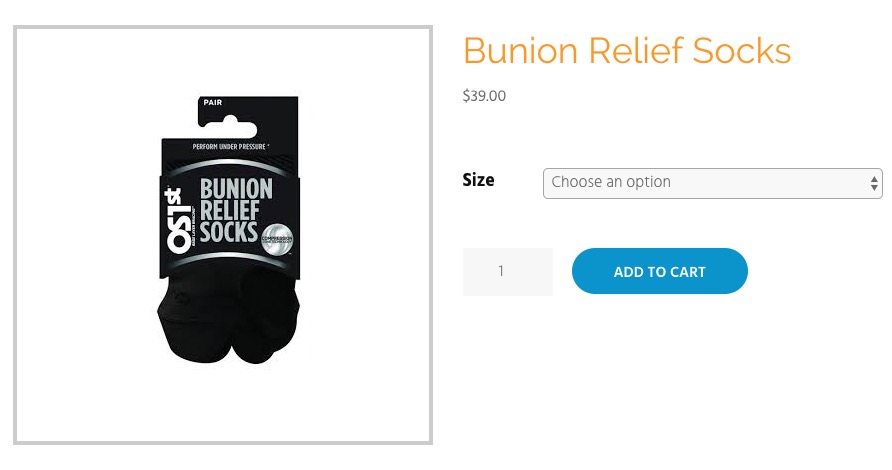Bunions are not nice to have – they’re painful, and they give your feet a strange shape. But, what exactly is a bunion? Well, bunions happen when the joint that connects your big toe to the rest of your foot gets bent out of place, which causes it to deform and swell up.
They don’t happen overnight; instead, they develop slowly over a period of time. You can also develop bunions on your little toe known as bunionettes – an oddly cute name for something so unpleasant.

What causes a bunion to develop?
You might have heard several theories floating around about how one gets bunions on their feet, but there isn’t really an exact cause.
Some of the theories are:
1. Wearing tight-fitting shoes or high heels
Wearing tight-fitting shoes or high heels makes you more prone to bunions, since it squeezes your toes together. It may also be a reason bunions are more common in women, since they are more likely to wear narrow shoes and high heels.
2. Prior stress of injury on your foot, or deformities at birth
Factors such as stress, injury or deformities can cause bunions. If you don’t bear weight evenly on your feet, this instability can also increase your risk of getting bunions.
3. Arthritis
The cause of bunions can also be associated with certain types of arthritis, particularly the kind that causes inflammations, like rheumatoid arthritis.
4. Medical conditions
Conditions like gout or neuromuscular diseases (polio, for one) can also contribute to the cause of bunions.
5. Hereditary
Another theory is that the tendency for bunions is hereditary – meaning, you’re genetically predisposed to getting bunions.
6. Lifestyle
If you’re on your feet a lot, especially in retail and service industries, this further heightens your risk of getting bunions.
The various stages of bunion development
Bunion development is a gradual process. You won’t wake up one morning and find your big toe has gone crooked overnight (thankfully).
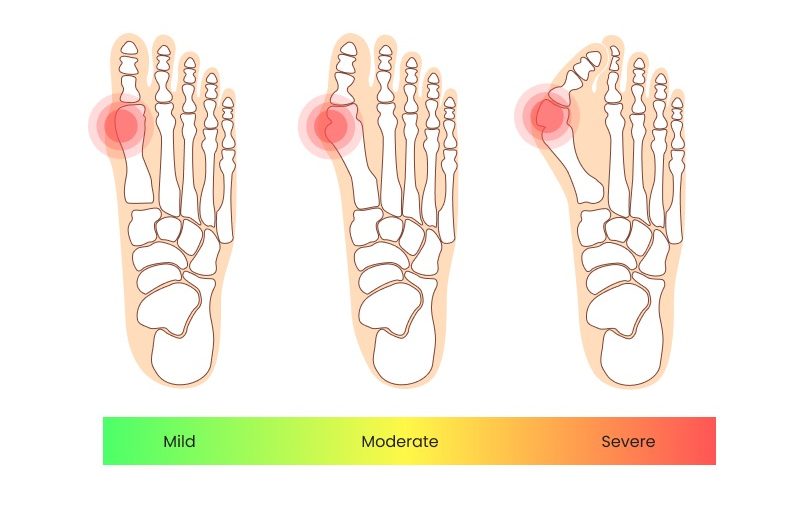
Bunions often start out as minor issues, and if left untreated, they can develop into a severe disfiguration.
A serious bunion makes you unable to wear certain kinds of shoes, and also causes problems with mobility.
When should I seek treatment?
It depends on how your bunion reacts. Some may never change in size, while others can end up becoming a major deformity.
However, if you start experiencing the following, you should seek treatment:
- You feel pain: If you have ongoing pain in your big toe and foot, especially during walking, it should not be ignored.
- You’re unable to wear shoes: If you find yourself unable to fit into shoes due to the size of the bunion and/or pain, you should get treatment.
- You have a very visible bump on the joint: This usually means that your bunion has progressed into a severe stage.
If left untreated, bunions can cause additional complications, such as:
- Bursitis: This rather painful condition happens when little fluid-filled pads in our joints become inflamed. These little pads are called bursae, and they act as cushions for our bones.
- Hammertoe: Also known as a contracted toe, this is a deformity that causes your toes to become bent like the head of a hammer. The middle joint becomes bent, and usually affects the toe next to your big toe.
- Metatarsalgia: “Metararsalgia” means metatarsal pain. It is also sometimes known as a stone bruise, and is used to refer to any foot condition that affects the ball of your foot, and usually develops as pain and swelling in the area.
Do I need surgery?
Your doctor will do an x-ray on your foot to determine how severe your bunion is, and whether or not you require surgery. In most cases, they can be treated without surgery.
Surgery on bunions is generally recommended only when nonsurgical treatment is ineffective in relieving the symptoms. You shouldn’t undergo bunion surgery for purely cosmetic reasons.
Not every symptom can be solved through surgery, and it’ll keep you off your feet for a good number of weeks. Recovery can take you a year or more, depending on the procedure you have.
What happens during surgery?
The severity of your bunion will determine what procedures are used.
| Bunion severity | Procedure |
| Mild |
Recovery takes 3–4 weeks and usually involves wearing a postoperative shoe. May not correct the deformity that caused the bunion. |
| Moderate |
Recovery takes 4–6 weeks, depending on the procedure. You may need to wear a short cast and use crutches. |
| Severe |
Recovery takes 6–12 weeks. You may need to wear a short cast and use crutches. If the joint is beyond repair, it may be replaced with an artificial joint. |
Products to help with treating your bunion
For nonsurgical treatment methods, there are a wide variety of products available for bunions. With proper care and the right products, you can treat your bunion easily at home.
There are splints you can wear while you sleep, compression wraps, gel cushions, and toe spreaders.
1. 3 in 1 Bunion Kit

This kit contains three essential items for your daily bunion care. It also helps to prevent your bunion from getting worse. Included in the kit is a Bunion Bootie, Bunion Cushion, and a Bunion Night Splint.
Bunion Bootie
This is an insert that you can wear all day with your regular footwear. You can keep it on for all activities, including running.
Start off with short intervals of 2 hours, before increasing it progressively when your joints get more accustomed to the bootie.
Bunion Cushion
The cushion helps keep your big toe from tilting inwards and is great for relaxing the joint. It’s especially great for flats, and is easily hidden inside your shoes.
Bunion Night Splint
Designed to be worn while you’re sleeping, the Night Splint serves to pull your big toe out and keep it straight.
To use this, you’ll want to start off by wearing it for 30-minute intervals. Once your joints get more flexible, you can slowly increase the duration of wear.
You can start wearing it to sleep once you can wear it for at least 6 hours nonstop. Once you start feeling discomfort, remove it and give your big toe a rest.
2. Elastic Ultrathin Hallux Valgus Splint

This bunion corrector makes use of elastic pull to straighten your toe. The fabric also serves to eliminate friction between your toes and makes the fit more comfortable. It also has air holes to improve breathability.
You can also adjust the tightness thanks to its adjustable loops. We recommend it for day wear, and it’s suitable for any kind of shoe.
The best part? It’s washable – hand-wash it with mild soap and hang to dry.
3. OS1st BR4 Bunion Relief Socks
Designed to reduce friction pain and provide comfort, this bunion sock has a split-toe design to relieve bunion pain.
It helps separate your toes, and has extra padding to prevent blisters and rubbing from footwear, which can increase irritation of sensitive areas.
It’s also made of durable soft microfiber nylon that also helps to wick away moisture so your feet don’t get sweaty and smelly.
It’s washable, and we recommend hand-washing and air-drying to increase its lifespan.
Treating your bunion naturally – the Feetcare way
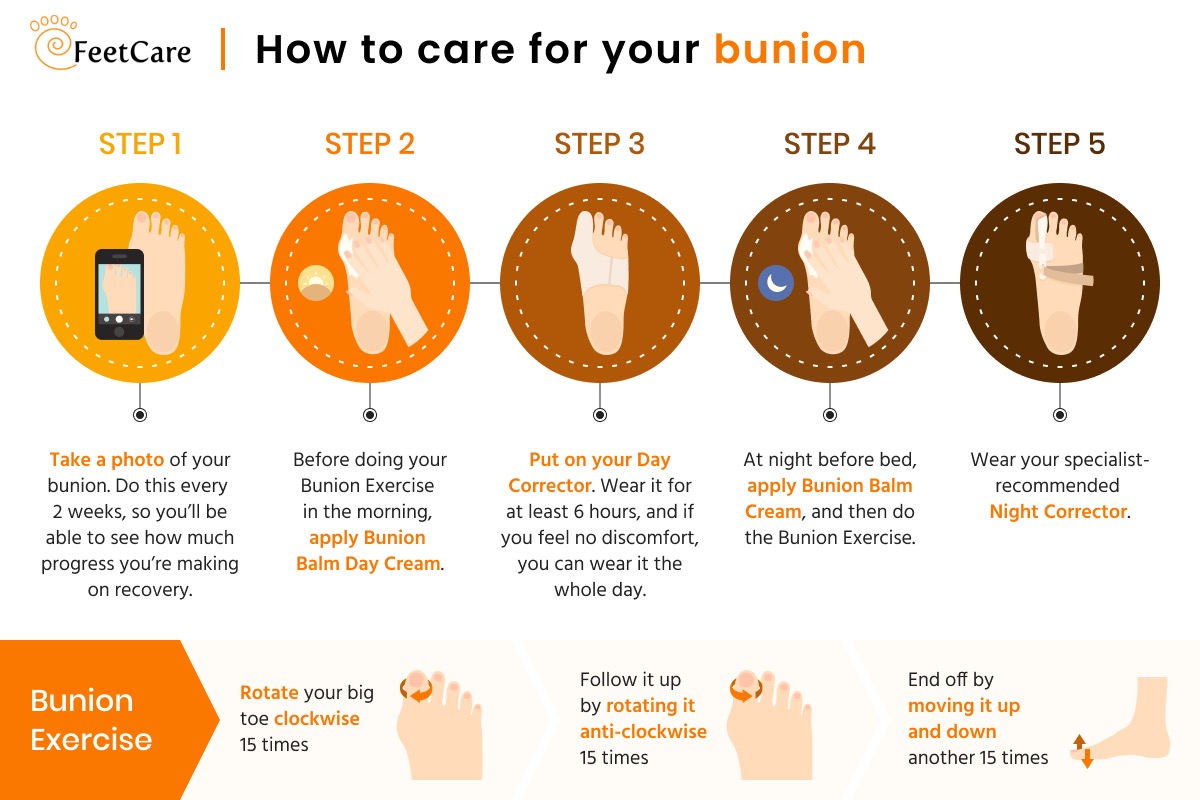
With proper care for your bunions, you can prevent it from getting worse. Here are a few quick steps to care for your bunion – specially created by our feet specialists:
Step 1
Take a photo of your bunion.
Do this every 2 weeks, so you’ll be able to see how much progress you’re making on recovery.
Step 2
Before doing your Bunion Exercise in the morning, apply Bunion Balm Day Cream.
Bunion Exercise
1. Rotate your big toe clockwise 15 times
2. Follow it up by rotating it anti-clockwise 15 times
3. End off by moving it up and down another 15 times
Step 3
Put on your Ultra-Thin Day Corrector.
We recommend that you wear it for about 6 hours in the morning, but if you don’t feel any discomfort, you can wear it for the entirety of your day.
Step 4
At night before bed, apply Bunion Balm Cream, and then do the Bunion Exercise.
Step 5
Wear your specialist-recommended Night Corrector.
Step 6
Twice a week, do a cold salt-water foot soak, and after two weeks, you can start changing your footwear.
Your specialist-in-charge will also follow up with you every two weeks on how your bunion recovery is progressing.
Successful cases
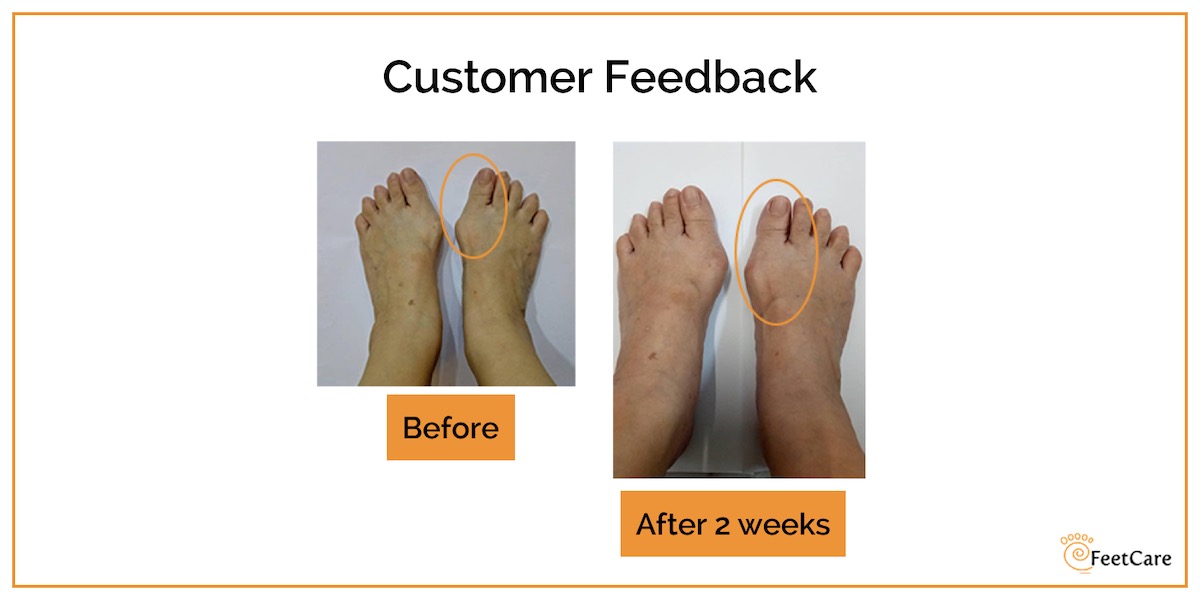
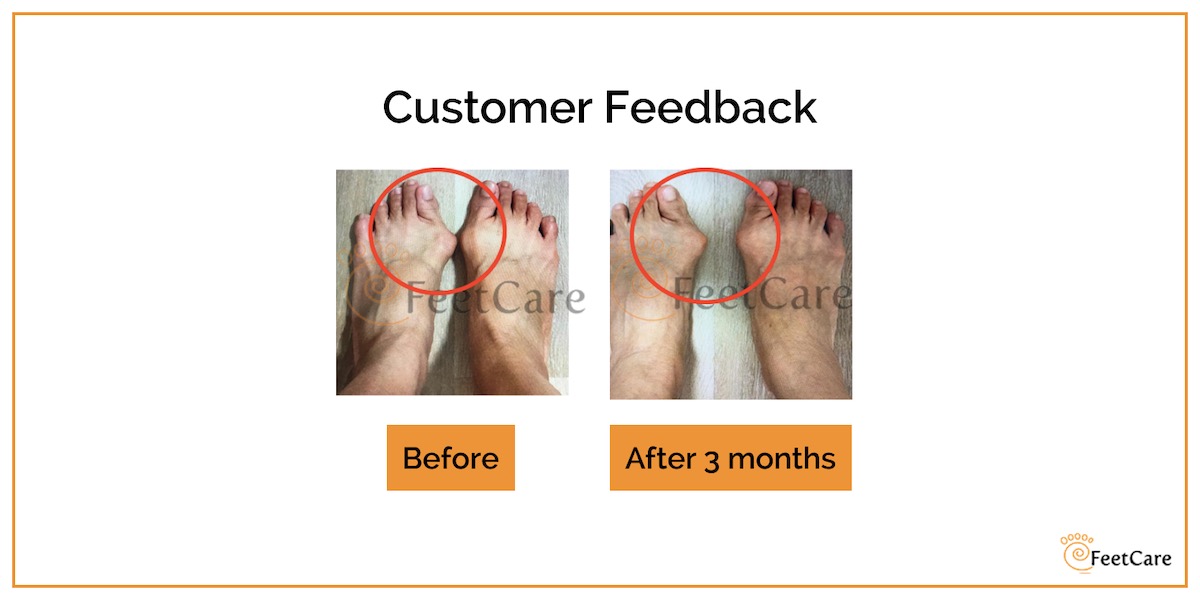
We have helped many bunion cases and seen positive results. Being patient and consistent with these treatment steps is essential. In due time, you’ll see results without the need for invasive surgery.
If you think you have a bunion, reach out to us! Our feet specialists will be happy to help!

